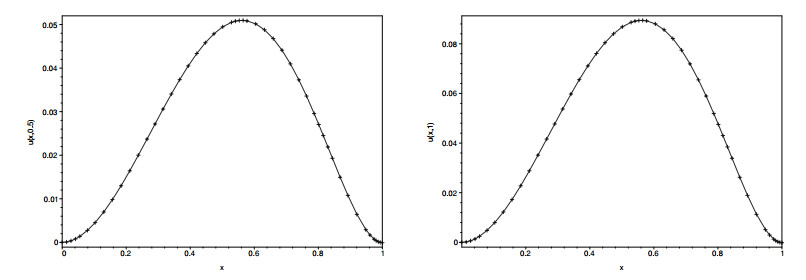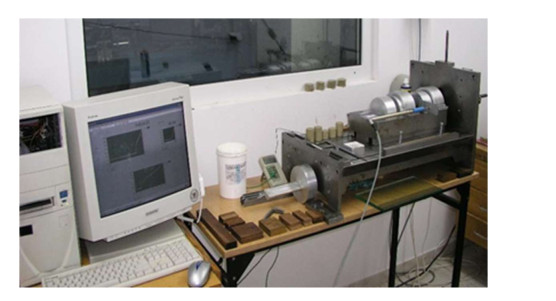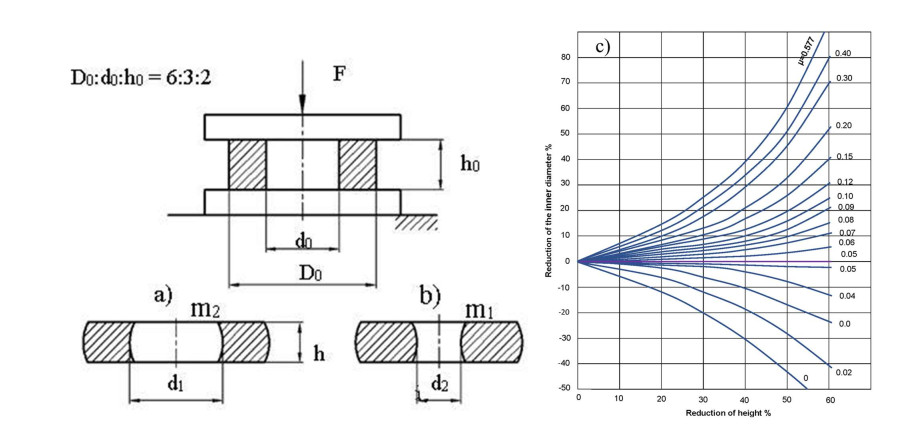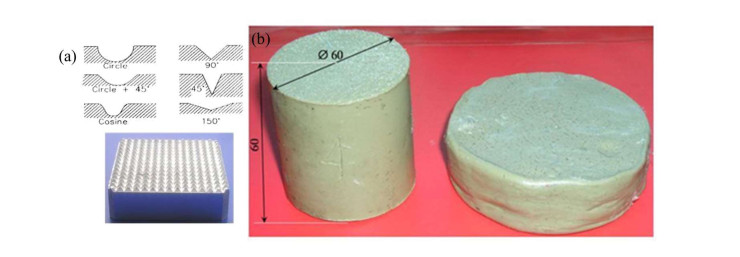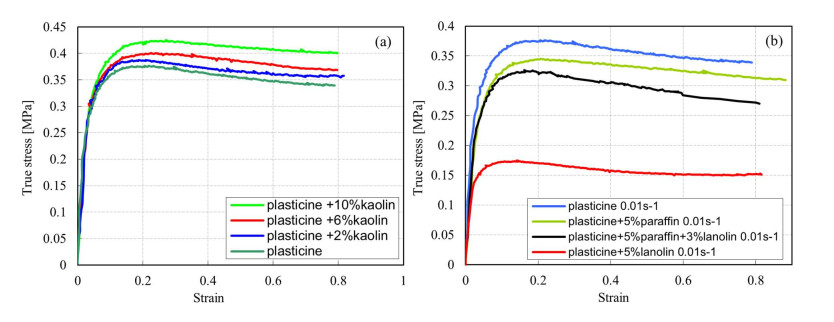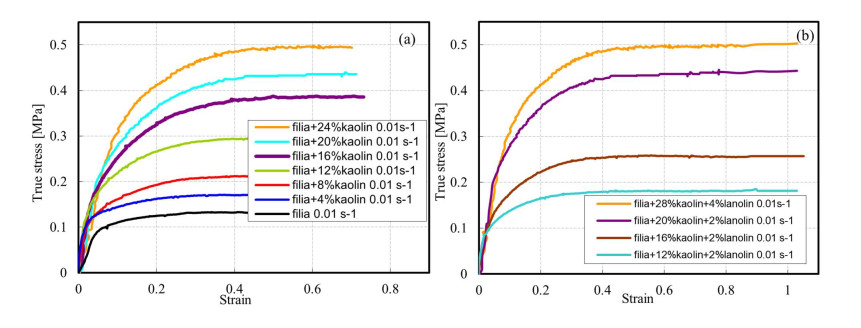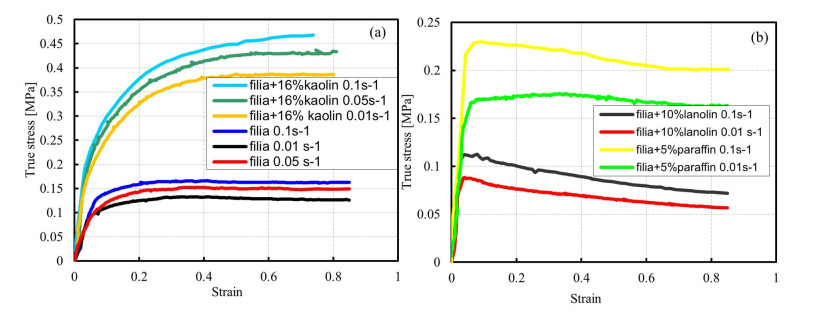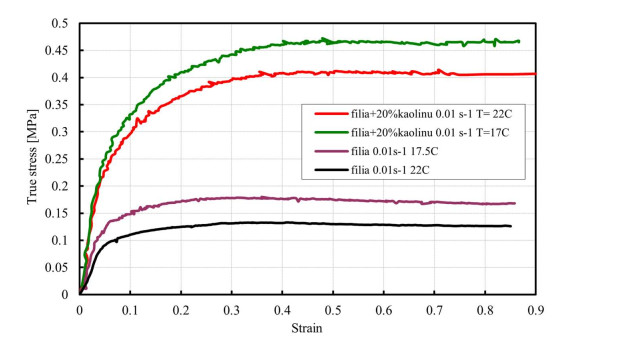1.
Introduction
Fractional calculus (FC) is an appropriate tool to describe the physical properties of materials. Currently mathematical theories and realistic applications of FC are recognized. Thus fractional-order differential equations (FDEs) have been established for modeling of real phenomena in various fields such as physics, engineering, mechanics, control theory, economics, medical science, finance and etc. There are a lot of studies which deal with the numerical methods for FDEs. Modeling of spring pendulum in fractional sense and its numerical solution [1], numerical solution of fractional reaction-diffusion problem [2], study of the motion equation of a capacitor microphone in fractional calculus [3], fractional modeling and numerical solution of two coupled pendulums[4], fractional telegraph equation with different types of solution such as fractional homotopy analysis transform method [5] and homotopy perturbation transform method [6] can be found in literatures.
Time fractional telegraph equation with Riesz space fractional derivative is a typical fractional diffusion- wave equation which is applied in signal analysis and the modeling of the reaction diffusion and the random walk of suspension flows and so on. Lately numerical methods such as finite element approximation [7], L1/L2 – approximation method, the standard/shifted Grunwald method and the matrix transform method [8], Chebyshev Tau approximation [9], radial basis function approximation [10], Low-rank solvers [11], and some other useful methods are used to find the approximate solutions of fractional diffusion equation with Riesz space fractional derivative. Differential transform method (DTM) is a reliable and effective method which was constructed by Zhoue [12] for solving linear and nonlinear differential equations arising in electrical circuit problems. This method constructs an analytical solution in the form of a polynomial based on Taylor expansion, which is different from traditional high order Taylor series method. DTM makes an iterative procedure to obtain Taylor series expansion, which needs less computational time compared to the Taylor series method. DTM was extended by Chen and Ho [13] into two dimensional functions for solving partial differential equations. One and two dimensional differential transform methods were generalized for ordinary and partial differential equations of fractional order (GDTM) by Odibat and Momani [14,15]. DTM and GDTM were applied by many authors to find approximate solution for different kind of equations. S. Ray [16] used the modification of GDTM to find numerical solution for KdV type equation [17]. More over, Soltanalizadeh, Sirvastava and Garg [18,19,20] applied GDTM and DTM to find exact and numerical solutions for telegraph equations in the cases of one-space dimensional, two and three dimensional and space –time fractional derivatives. Furthermore GDTM were applied to find numerical approximations of time fractional diffusion equation and differential-difference equations [21,22], as well as DTM was used to obtain approximate solution of telegraph equation [23].
In previous studies all types of partial differential equations such as telegraph equation, which were solved by DTM and GDTM were not involved Riesz space fractional derivative operator. This work investigates an improved scheme for fractional partial differential equations with Riesz space fractional derivative to obtain semi analytical solution for these types of equations. For the simplicity we consider a kind of telegraph equation with Riesz operator on a finite one dimensional domain in the form:
subject to the initial conditions
and boundary conditions
where k>v≥0 and η>0 are constants.
Generally the Riesz space-fractional operator ∂γ∂|x|γ over [a,b] is defined by:
We suppose that 1<γ<2, and u(x,t),f(x,t),ϕ(x) and ψ(x) are real-valued and sufficiently well-behaved functions.
The main goal of this paper is providing an improved scheme based on GDTM to obtain numerical solution for Eq (1.1). To implement this technique we separate the main equation into sub equations by means of new theorems and definitions. This separation enable to derive a system of fractional differential equations. Then we apply improved GDTM for system of fractional differential equations to obtain system of recurrence relations. The solution will be attained with inverse transformation to the last system.
The rest of this study is organized as follows. Section 2 discusses preliminary definitions of fractional calculus. In section 3 we give some knowledge of two dimensional generalized differential transform method and two dimensional differential. transform method, afterward in section 4 the implementation of the method accompanied by new definitions and theorems are described while the equation contains Riesz space fractional derivative. Section 5 provides an error bound for two-dimensional GDTM. In section 6 some numerical examples are presented to demonstrate the efficiency and convenience of the theoretical results. The concluding remarks are given in section 7.
2.
Some definitions of fractional calculus
In this section some necessary definitions of fractional calculus are introduced. Since the Riemann-Liouville and the Caputo derivatives are often used, as well as the Riesz fractional derivative is defined based on left and right Riemann-Liouville derivatives, we focus on these definitions of fractional calculus. Furthermore in the modeling of most physical problems, the initial conditions are given in integer order derivatives and the integer order derivatives are coincided with Caputo initial conditions definition; therefore the Caputo derivative is used in numerical algorithm.
Definition 2.1. The left and right Riemann-Liouville integrals of order α>0 for a function f(x) on interval (a,b) are defined as follows,
where Γ(z)=∫∞0e−ttz−1dt,z∈C is the Gamma function.
Definition 2.2. The left and right Riemann-Liouville derivatives of order α>0 for a function f(x) defined on interval (a,b) are given as follows,
where m−1<α≤m.
Remark 2.3. From the Riemann-Liouville derivatives definition and the definition of the Riesz space fractional derivative one can conclude for 0≤x≤L
∂γ∂|x|γu(x,t)=−ξγ(R0Dγx+RxDγL)u(x,t) while ξγ=12cosγπ2,γ≠1, and R0Dγx and RxDγL are left and right Riemann-Liouville derivatives.
Definition 2.4. The left and right Caputo derivatives of order α for a function f(x) are defined as
There are relations between Riemann-Liouville and Caputo derivatives as follows:
It is clear that if f(k)(a)=0,k=0,1,...,m−1 then the Riemann-Liouville and Caputo derivatives are equal. For comprehensive properties of fractional derivatives and integrals one can refer to the literatures [24,25].
3.
Generalized two dimensional differential transform and differential transform methods
Generalization of differential transform method for partial differential equation of fractional order was proposed by Odibat et al. [15]. This method was based on two-dimensional differential transform method, generalized Taylor's formula and Caputo fractional derivatives.
Consider a function of two variables u(x,t) and suppose that it can be represented as a product of two single-variable functions, i.e u(x,t)=f(x)g(t). If u(x,t) is analytic and can be differentiated continuously with respect to x and t in the domain of interest, then the function u(x,t) is represented as
where 0<α,β≤1,Uα,β(k,h)=Fα(k)Gβ(h) is called the spectrum of u(x,t). The generalized two-dimensional differential transform of the function u(x,t) is as follows
where (Dαx0)k=Dαx0⋅Dαx0⋯Dαx0,k−times, and Dαx0 represents the derivative operator of Caputo definition.
On the base of notations (3.1) and (3.2), we have the following results.
Theorem 3.1. Suppose that Uα,β(k,h),Vα,β(k,h) and Wα,β(k,h) are differential transformations of the functions u(x,t),v(x,t)andw(x,t), respectively; then
(a) If u(x,t)=v(x,t)±w(x,t) then Uα,β(k,h)=Vα,β(k,h)±Wα,β(k,h),
(b) If u(x,t)=cv(x,t),c∈R then Uα,β(k,h)=cVα,β(k,h),
(c) If u(x,t)=v(x,t)w(x,t) then Uα,β(k,h)=∑kr=0∑hs=0Vα,β(r,h−s)Wα,β(k−r,s),
(d) If u(x,t)=(x−x0)nα(t−t0)mβ then Uα,β(k,h)=δ(k−n)δ(h−m),
(e) If u(x,t)=Dαx0v(x,t),0<α≤1 then Uα,β(k,h)=Γ(α(k+1)+1)Γ(αk+1)Vα,β(k+1,h)
Theorem 3.2. Suppose that u(x,t)=f(x)g(t) and the function f(x)=xλh(x), where λ>−1 and h(x) has the generalized Taylor series expansion i.e. h(x)=∑∞n=0an(x−x0)αk, and
(a) β<λ+1 and α is arbitrary or
(b) β≥λ+1,α is arbitrary, and ak=0 for k=0,1,..,m−1, where m−1≤β≤m.
Then the generalized differential transform (3.2) becomes
Theorem 3.3. Suppose that u(x,t)=f(x)g(t) and the function f(x) satisfies the condition given in theorem 3.2 and u(x,t)=Dγx0v(x,t) then
where α is selected such that γ/α∈Z+.
The method and proofs of the theorems 3.1, 3.2 and 3.3 are well addressed in literature [14].
In case α=β=1, GDTM reduces to DTM which is briefly introduced as follows.
Definition 3.4. Suppose that u(x,t) is analytic and continuously differentiable with respect to space x and time t in the domain of interest, then
where the spectrum function U(k,h) is the transformed function, which also is called T-function and u(x,t) is the original function. The inverse differential transform of U(k,h) is defined as
From these equations we have
Definition 3.4 eventuates the following relations
(a) If u(x,t)=v(x,t)±w(x,t) then U(k,h)=V(k,h)±W(k,h),
(b) If u(x,t)=cv(x,t) then U(k,h)=cV(k,h),
(c) If u(x,t)=∂∂xv(x,t) then U(k,h)=(k+1)V(k+1,h),
(d) If u(x,t)=∂r+s∂xr∂tsv(x,t) then U(k,h)=(k+r)!(h+s)!k!h!V(k+r,h+s),
(e) If u(x,t)=v(x,t)w(x,t) then U(k,h)=∑kr=0∑hs=0V(r,h−s)W(k−r,s).
The basic definitions and fundamental operations of two-dimensional differential transform can be found in literature [13].
4.
Description of the method
To gain an algorithm for applying GDTM to Eq (1.1) we need some new theorems and definitions which are presented as follows.
Theorem 4.1. Suppose u(x,t)=∑∞k=0∑∞h=0U(k,h)xkth and v(x,t)=R0Dγxu(x,t), 1<γ<2, is the left Riemann-Liouville derivative then
Proof. By replacing u(x,t)=∑∞k=0∑∞h=0U(k,h)xkth in the left Riemann-Liouville derivative definition it is easy to achieve
Theorem 4.2. Suppose u(x,t)=∑∞k=0∑∞h=0U(k,h)xkth and v(x,t)=RxDγlu(x,t), 1<γ<2, is the right Riemann-Liouville derivative, then
Proof. By replacing u(x,k)=∑∞k=0∑∞h=0U(k,h)xkth in the right Riemann-Liouville derivative definition it is easy to obtain
With replacing ξ−x=t and then l−x=y we have
In both theorems 4.1 and 4.2 L is Laplace transform operator which is defined as L(f)=∫∞0f(t)e−stdt and (f∗g) represents the convolution of f and g which is defined as (f∗g)=∫t0f(t−τ)g(τ)dτ.
As it is observed in calculation of left and right Riemann-Liouville derivatives for function u(x,t), coefficients of variables xk−γth and (l−x)k−γth are appeared, respectively. Therefore we expect to see functions of xk−γth and (l−x)k−γth in equations which involves Riesz space fractional derivatives. In DTM, it is traditional to expand the function u(x,t) with respect to integer order of x and t, i.e.
which means that u(x,t) has Taylor series expansion. However xk−γ and (l−x)k−γ are not smooth enough on [0,l], in this case we define different notation for differential transformation.
Definition 4.3. we use ¯Uγ,0(k,h) as a notation for differential transform of function u(x,t) where u(x,t) has the series representation in the form of u(x,t)=∑∞k=0∑∞h=0¯Uγ,0(k,h)(x−x0)k−γ(t−t0)h.
Definition 4.4. we use ¯¯Uγ,0(k,h) as a notation for differential transform of function u(x,t) where u(x,t) has the series representation in the form of u(x,t)=∑∞k=0∑∞h=0¯¯Uγ,0(k,h)(l−(x−x0))k−γ(t−t0)h.
Theorem 4.5. If v(x,t)=R0Dγxu(x,t)1<γ<2, then ¯Vγ,0(k,h)=Γ(k+1)Γ(k+1−γ)U(k,h) The proof follows directly from theorem 4.1 and definition 4.3 at (x0,t0)=(0,0).
Theorem 4.6. If v(x,t)=RxDγlu(x,t),1<γ<2, then
The proof follows directly from theorem 4.2 and definition 4.4 at (x0,t0)=(0,0).
These definitions and theorems assist to describe the implementation of the method. For this aim recall Eq (1.1), since u(x,t) is supposed to be smooth enough, we primarily focus on special separation of f(x,t) in Eq (1.1) into three functions f1,f2,f3 as follows
where f1 is a function which contains integer order of x and fractional order of t with the series representation as f1(x,t)=∑∞k=0∑∞h=0F1(k,h)(x−x0)k(t−t0)βh and f2 is a function which contains xk−γ and t which has the series representation as f2(x,t)=∑∞k=0∑∞h=0ˉF2(k,h)(x−x0)k−γ(t−t0)h and f3 is a function involves (l−x)k−γ and t with the series representation as f3(x,t)=∑∞k=0∑∞h=0ˉˉF3(k,h)(l−(x−x0))k−γ(t−t0)h, then we take the following three steps
Step1. The left parts of Eq (1.1) which do not have Riesz space derivatives are equivalent with the inhomogeneous part, which have integer order of x and fractional order of t. i.e:
Now we apply GDTM as follows
where F1(k,h) is the differential transform of f1(x,t).
Step2. As mentioned in remark 2.3 Riesz space derivative contains left and right Riemann-Liouville derivatives, i.e. ∂γ∂|x|γu(x,t)=−ξγ(R0Dγx+RxDγL)u(x,t), for the next step we set
then with using differential transform method according to theorem 4.5 we get
Step3. For the last step we set
Then with applying differential transform by means of new notation according to the theorem 4.6 we obtain,
The differential transform of initial and boundary conditions are
where Φ(k) and Ψ(k) are differential transforms of ϕ(k) and ψ(k), respectively. The recurrence relations (4.2), (4.4), and (4.6) are compatible and we calculate U(k,h),k,h=0,1,2,..., with using of each one and (4.7). Then with the inverse transformation we find the approximate solution of u(x,t) as follows
5.
Error estimation
In this section we find an error bound for two dimensional GDTM. As we know DTM is obtained from GDTM when the fractional powers reduce to integer order, therefore one can find an error bound for two dimensional DTM at the same manner.
As mentioned before we assume that u(x,t) is analytic and separable function which has the series representation in the form of u(x,t)=∑∞k=0∑∞h=0U(k,h)(x−x0)αk(t−t0)βh, then we have the following theorems.
Theorem 5.1. Suppose v(x)=∑∞k=0ak(x−x0)αk and let ϕk(x)=ak(x−x0)αk, then the series solution ∑∞k=0ϕk(x) converges if ∃0<γ1<1 Such that ‖ϕk+1(x)‖≤γ1‖ϕk(x)‖,∀k≥k0forsomek0∈N, where ‖ϕk(x)‖=maxx∈I|ϕk(x)| and I=(x0,x0+r), r>0.
Remark 5.2. The series solution v(x)=∑∞k=0ak(x−x0)αk converges if limk→∞|ak+1ak|<1/maxx∈I(x−x0)α,I=(x0,x0+r),r>0, in this case the function v(x) is called α-analytic function at x0.
Remark 5.3. Suppose Sn=ϕ0(x)+ϕ1(x)+⋯+ϕn(x), where ϕk(x)=ak(x−x0)αk then for every n,m∈N,n≥m>k0 we have ‖Sn−Sm‖≤1−γn−m11−γ1γm−k0+11maxx∈I|ϕk0(x)|. Notice that when n→∞ then
The proof of theorem 5.1 and remarks 5.2 and 5.3 are given in literature [26]. Now suppose that v(x) and w(t) are α-analytic and β-analytic functions respectively such that v(x)=∑∞k=0ak(x−x0)αk and w(t)=∑∞h=0bk(t−t0)βh, then the truncated error of u(x,t)=v(x)w(t) is found according to the next theorem.
Theorem 5.4. Assume that the series solution v(x)=∑∞k=0ϕk(x) with ϕk(x)=ak(x−x0)αk and w(x)=∑∞h=0ψh(x) where ψh(x)=ah(t−t0)βh converges, then the maximum absolute truncated error of function u(x,t)=v(x)w(t) is estimated by
where M=maxx∈I|v(x)|,N=maxt∈J|w(t)|, I=(x0,x0+r), J=(t0,t0+l), γ1 and γ2 are determined by theorem 5.1.
Proof. from remark 5.3 for n≥m≥m0 for any m0≥0 ‖Sn−Sm‖≤1−γn−m11−γ1γm−m0+11maxx∈I|am0(x−x0)αm0| where Sn=ϕ0(x)+ϕ1(x)+⋯+ϕn(x), and am0≠0,
as well we conclude that if Tp=ψ0(t)+ψ1(t)+⋯+ψp(t), for p≥q≥q0 for any q0≥0 then
It is clear that, when n→∞ then Sn→v(x), and when p→∞ then Tp→w(t), now
Since 0<γ1,γ2<1, we have (1−γn−m1)<1 and (1−γp−q2)<1, and the last inequality reduces to
It is clear that when m→∞ and q→∞ the right hand side of last inequality tends to zero, therefore ∑mk=0∑qh=0ϕk(x)ψh(t)→u(x,t).
We refer the readers to Anastassiou et al. [29] to see the monotone convergence of extended iterative methods.
6.
Numerical results
In this section, some examples are illustrated to verify the applicability and convenience of the mentioned scheme. It is notable that if the partial derivative in equation is integer order, DTM is used and in the case that the equation has fractional order derivatives then GDTM is used. The examples are presented in both cases.
Example 6.1. Consider the following Riesz -space fractional telegraph equation with constant coefficients [27]
where the initial and boundary conditions are
and the inhomogeneous term is
Under these assumptions, the exact solution of Eq (6.1) is u(x,t)=x2(1−x)2sint.
For using mentioned algorithm, first we separate f(x,y) in the form of
where f(x,t)=f1(x,t)+f2(x,t)+f3(x,t), with this separation we set
With applying differential transform method and using theorems (4.5) and (4.6) to system (6.3) we get
Where S(h) and C(h) indicate differential transforms of sint and cost, respectively which are obtained as
The differential transform of initial and boundary conditions are
From (6.6) it is easy to get U(0,1)=U(1,1)=0 and U(2,1)=1,U(3,1)=−2,U(4,1)=1 and U(k,1)=0 fork≥5.
From (6.4) with simple calculation we obtain
U(k,2)=0 fork=0,1,2,...
With using inverse differential transform method we have
Which is the exact solution.
Chen et al. [27] proposed a class of unconditionally stable difference scheme (FD) based on the Pade approximation to solve the problem (6.1) at t=2.0 with several choices for h and τ, where h and τ are the space and time step sizes, respectively. In Table 1, we compare ‖u−uN‖2 at t=2.0 with different choice for N. The results show that our method is more accurate than the three schemes which were proposed on their work. The main advantage of this method is lower computational work than Chen et al. [27], where with τ=10−4 as a time step length they need to evaluate 2000 iterations to reach t=2.
Example 6.2. Consider the following partial differential equation with Riesz space fractional derivative [28]
with initial condition
and boundary conditions
where the forced term is
The exact solution of Eq (6.7) is u(x,t)=x2(1−x)2(t+1)4.
For using the method, we separate the force term as
Now we set
With using differential transform method for system (6.9) and applying theorems 4.5 and 4.6 we get
Differential transform of initial and boundary conditions are
From (6.11) we have
From (6.10) we obtain
and U(k,h)=0 for h≥5, and k=0,1,2,....
Therefore with using inverse differential transform we have
Zhang et al. [28] achieved numerical results based on difference scheme for Eq (6.7) with different values for γ. However with our proposed improved GDTM, an analytical solution for Eq (6.7) is found.
Example 6.3. Consider the following fractional telegraph equation with Riesz space fractional derivative [7]
with initial condition
and boundary conditions
where the inhomogeneous term is
The exact solution of Eq (6.12) is u(x,t)=(4t2−4t+1)x2(1−x)2.
For using mentioned algorithm, we set
Suppose 2β=1.6, we choose α=0.2 and using GDTM and theorems 4.5 and 4.6 for fractional partial differential equation we get
Generalized differential transform for initial and boundary conditions are
Form (6.15) we obtain U(2,0)=1,U(3,0)=−2,U(4,0)=1 and U(k,0)=0 fork=0,1,5,6,...,
U(2,5)=−4,U(3,5)=8,U(4,5)=−4 and U(k,5)=0 for k=0,1,5,6,...
From (6.14) it is easy to find
U(2,10)=−4,U(3,10)=8,U(4,10)=−4 and U(k,10)=0 for k=0,1,5,6,...
Otherwise U(k,h)=0.
With using inverse generalized differential transform we obtain
Zhao et al. [7] used fractional difference and finite element methods in spatial direction to obtain numerical solution for Eq (6.12).Contrary, with our method the exact solution is achieved for this equation which demonstrate that this method is effective and reliable for fractional telegraph equation with Riesz space-fractional derivative.
Example 6.4. For the last example consider the following Riesz space fractional telegraph equation
where the initial and boundary conditions are
and the inhomogeneous term is
Under these assumptions, the exact solution of Eq (6.16) is u(x,t)=x2(1−x)2exsint. The approximate solution (with m=q=10) and exact solution of example 6.4 are illustrated in Figure 1. Also the exact solution and approximate solution in cases t=0.5 and t=1 are demonstrated in Figure 2, which shows the accuracy of the method.
7.
Conclusion
Riesz derivative operator appears in some partial differential equations such as telegraph equation, wave equation, diffusion equation, advection-dispersion equation and some other partial differential equations. These types of equations previously were solved by GDTM without considering Riesz derivative operator. In this paper an improved scheme based on GDTM was developed for solution of fractional partial differential equations with Riesz space fractional derivative. For this purpose the main equation was separated into sub-equations, in a manner which GDTM can be applied. With this trend the main equation reduces to system of algebraic recurrence relations which can be solved easily. The acquired results demonstrated that this method required less amount of computational work compared to the other numerical methods; moreover it was efficient and convenient technique. Providing convergent series solution with fast convergence rate was the advantage of the proposed method, which the numerical examples revealed these facts.
Acknowledgments
The authors would like to express his gratitude to the anonymous referees for their helpful comments and suggestions, which have greatly improved the paper.
Conflict of interest
The authors declare no conflict of interests in this paper.









 DownLoad:
DownLoad:

